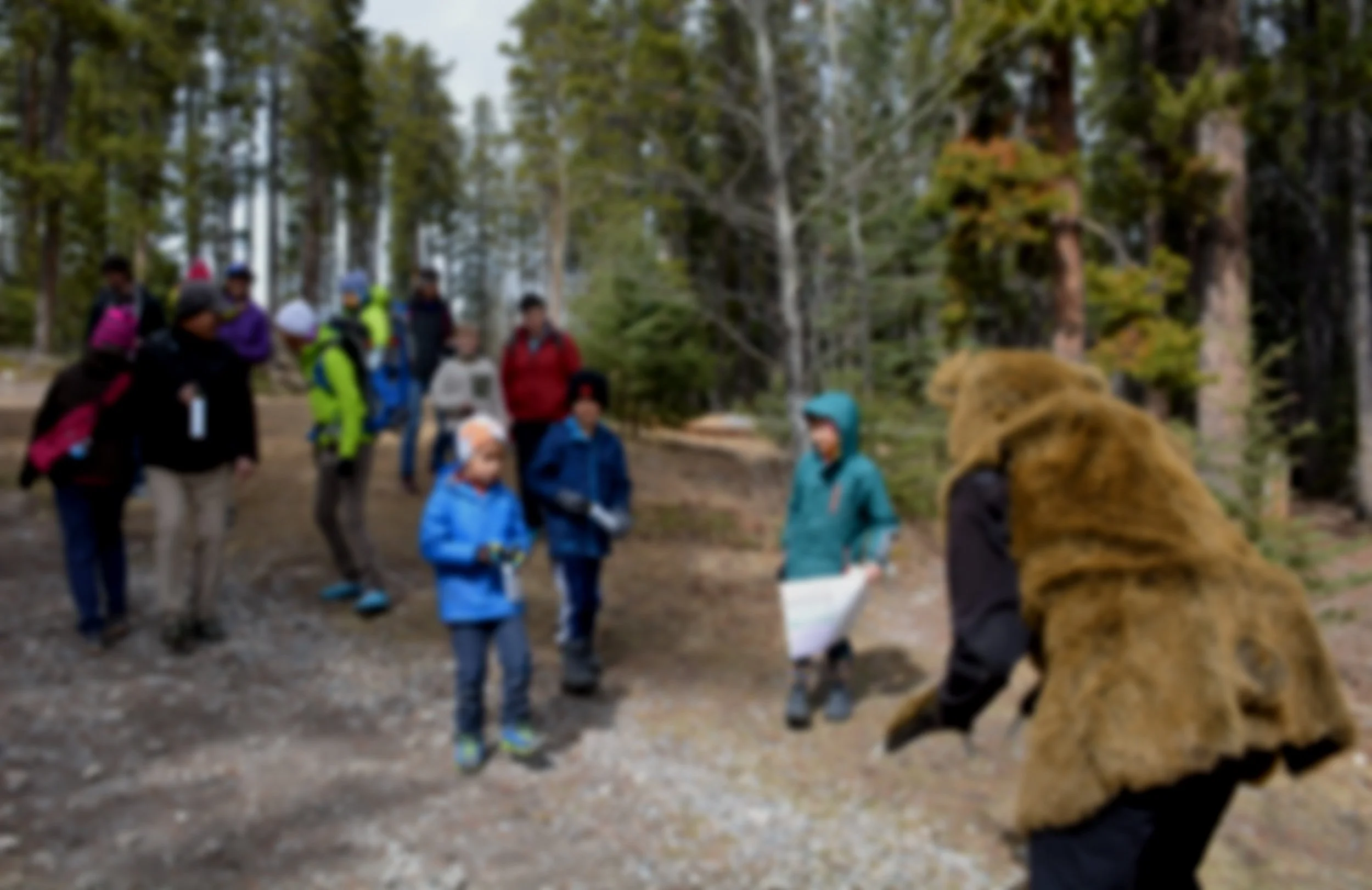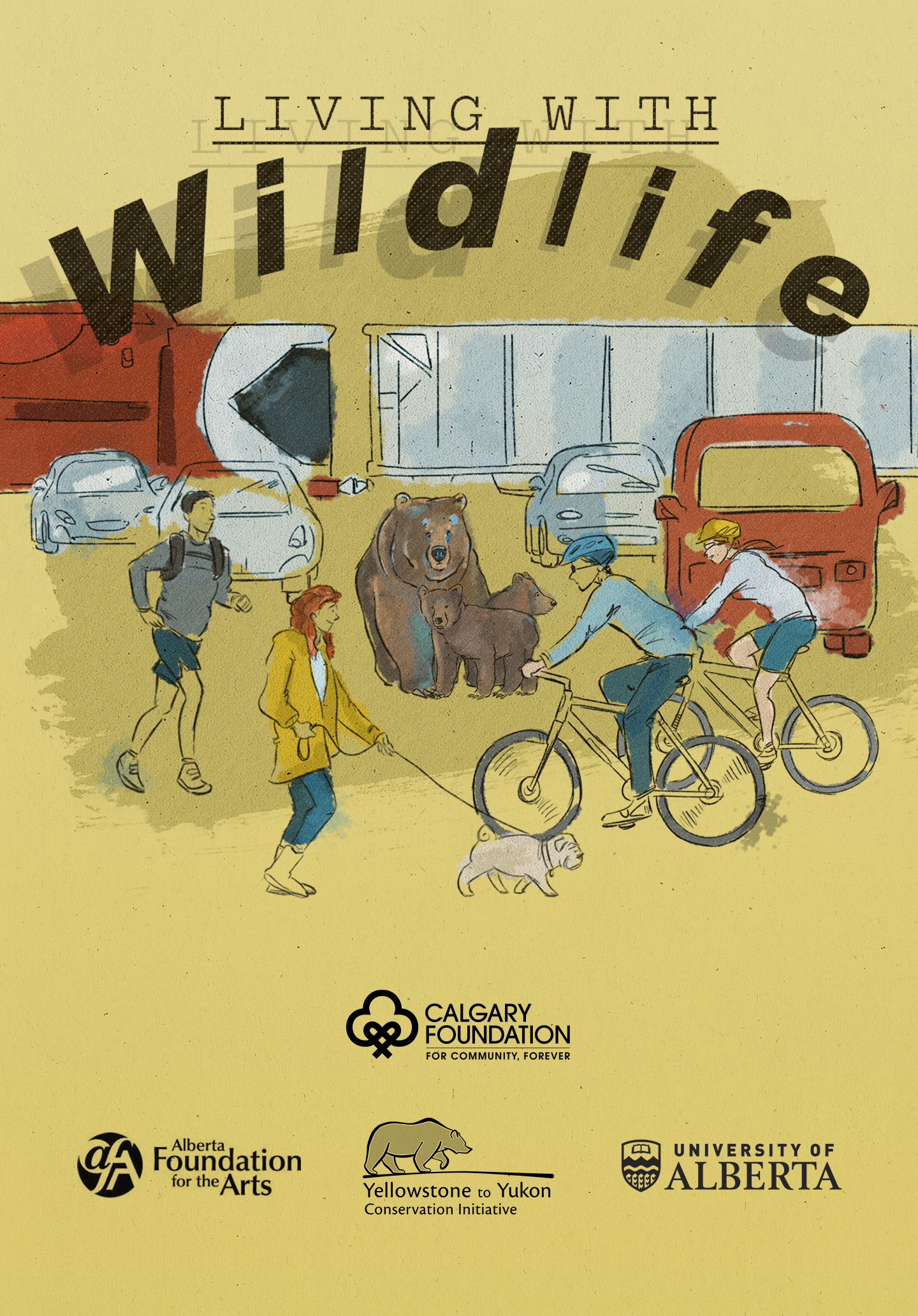WildSmart’s Living Smart with Wildlife brochure helps Bow Valley visitors and residents avoid and manage wildlife encounters. It contains information about bear spray attractants, roadside viewing, biking, pets, and more. We distribute thousands of printed copies throughout the Bow Valley each year.
Read on for Living Smart with Wildlife tips that are specific to recreating in bear country.
RECREATION WITH WILDLIFE IN MIND
When you’re out on the trails, remember that you are sharing space with wildlife. Precaution and pre-trip planning are the best ways to avoid an unwanted encounter. Before heading out, check for trail closures and warnings. Bigger picture, learn how to recognize the signs of bears and other wildlife and how to avoid encounters.
You can avoid a negative wildlife encounter and minimize the impact you have on wildlife by:
Making noise: Let wildlife know that you are coming by singing, yelling, or talking loudly. This is particularly important when traveling through areas of limited visibility or around streams and rivers where wildlife is less likely to hear you coming. Don’t rely on loud music from your iPhone or stereo on the trails. It is not effective to keep bears away and instead, it makes you less aware of your surroundings. Bear bells are not recommended by experts; the human voice carries much better.
Traveling in groups: Large groups of four or more people have proven less likely to be involved in a serious wildlife encounter.
Respecting all trail closures and warnings: Trail closures and warnings are put in place for public safety or when wildlife are most sensitive to people (e.g., during early spring when bears are emerging from their dens, during berry season, or during the elk mating season). Respect all closures and warnings by choosing another area to hike, bike, run, etc. Click here to view current trail closures and warnings in the Bow Valley, Kananaskis Country and Banff National Park.
Keeping a safe distance: Take photos or observe animals from a safe distance — 100 metres or more for carnivores such as bears, cougars, wolves and coyotes, and 30 metres or more for ungulates such as elk, moose, deer and sheep.
Being aware of your surroundings: Watch for fresh evidence of wildlife activity, such as tracks, scat, diggings or overturned rocks and logs. If you see a bear or see or smell a dead animal, leave the area.
Keeping children nearby
Keeping dogs on leash (unless in a designated off-leash area): Negative interactions between dogs and wildlife often end with the wild animal’s relocation by parks staff (which results in about a 50% survival rate) or euthanasia. It is illegal not to have your dog on leash in Canmore, the surrounding habitat patches, and in both provincial and national parks.
Carrying bear spray year-round and knowing how to use it: Bear spray should be carried in an easily accessible location such as a chest or hip holster or a belt, not in your backpack!
Staying out of designated wildlife corridors: If your trail cuts across a wildlife corridor, move through the area quickly.
Removing potential attractants: Whether it is your campsite or home, secure and/or remove potential attractants such as garbage, pet food, bird feeders, berry bushes and fruit trees. Learn more about attractant management here.
In case you do come across wildlife, follow the tips below for managing encounters with specific species.







